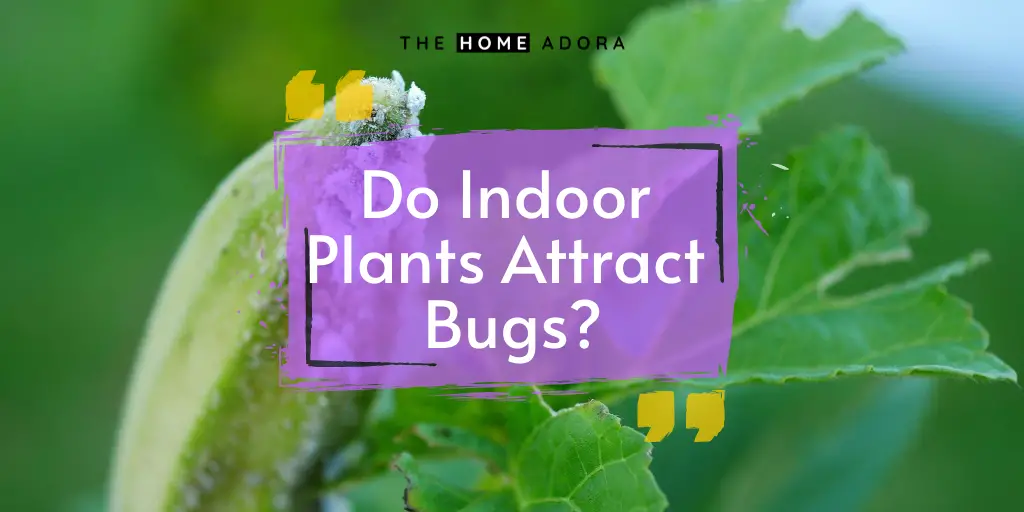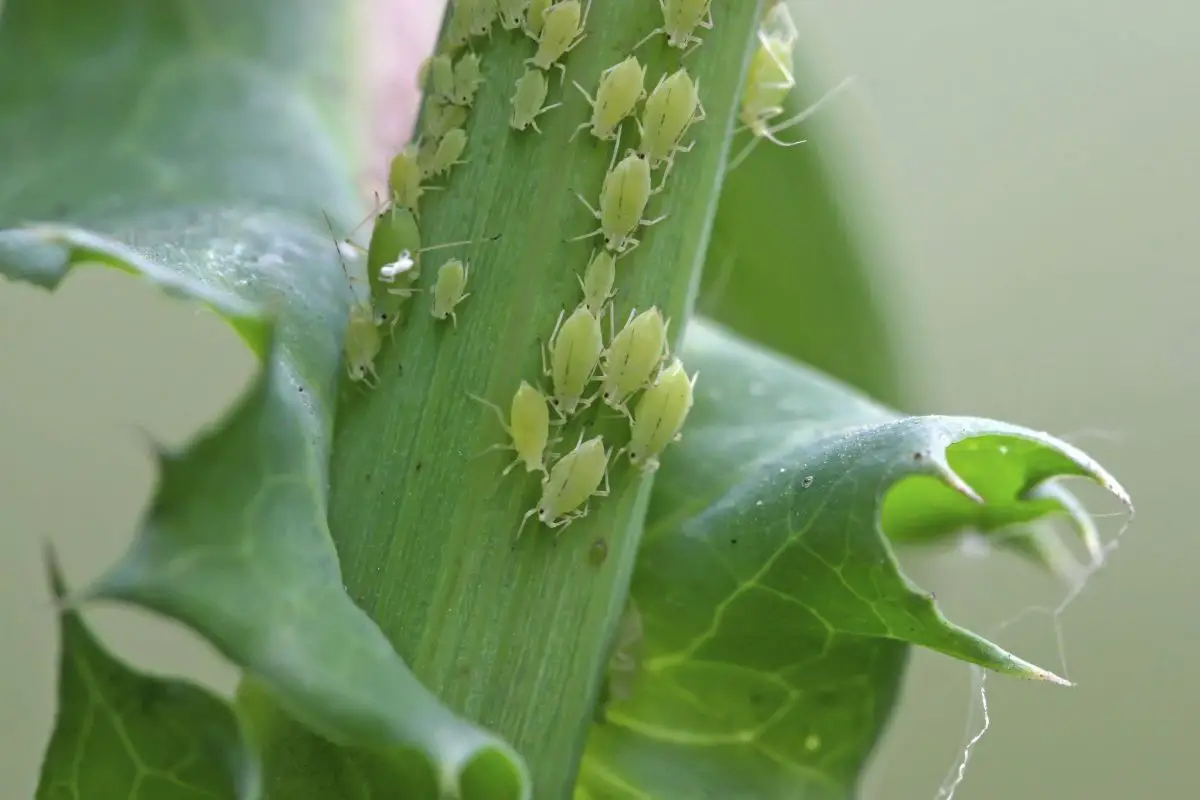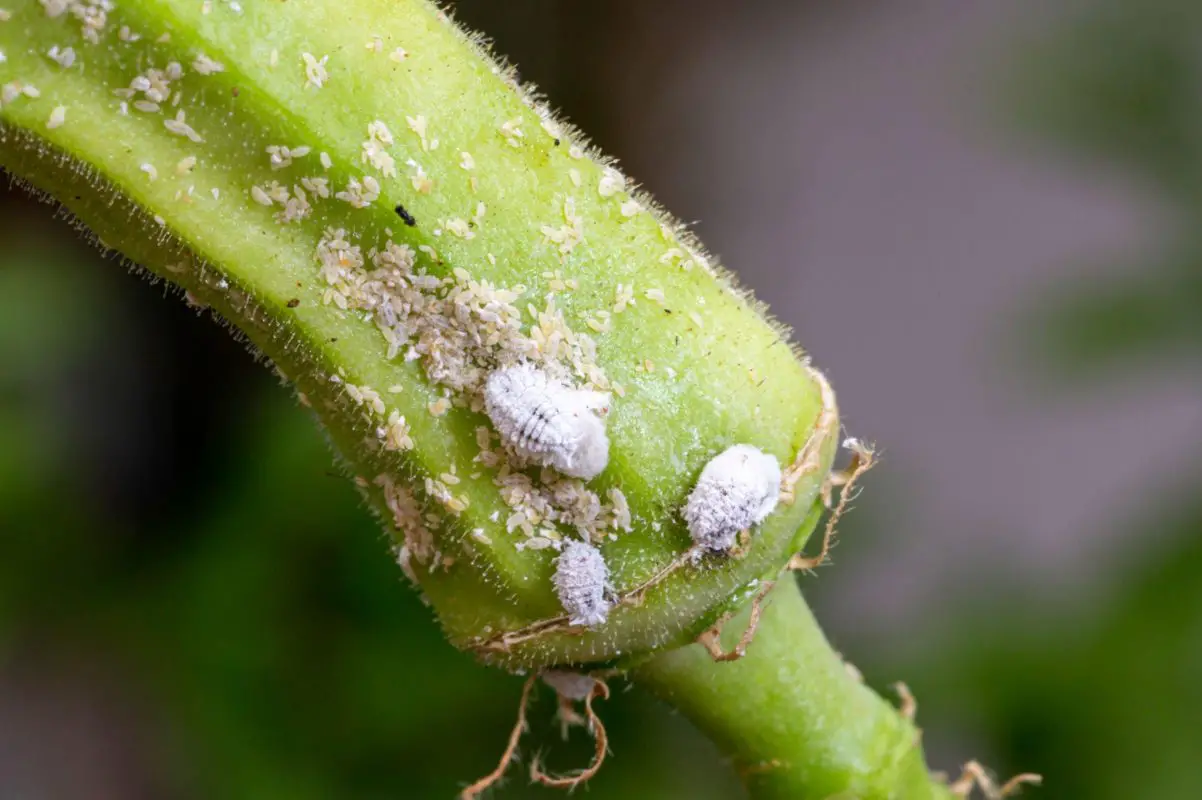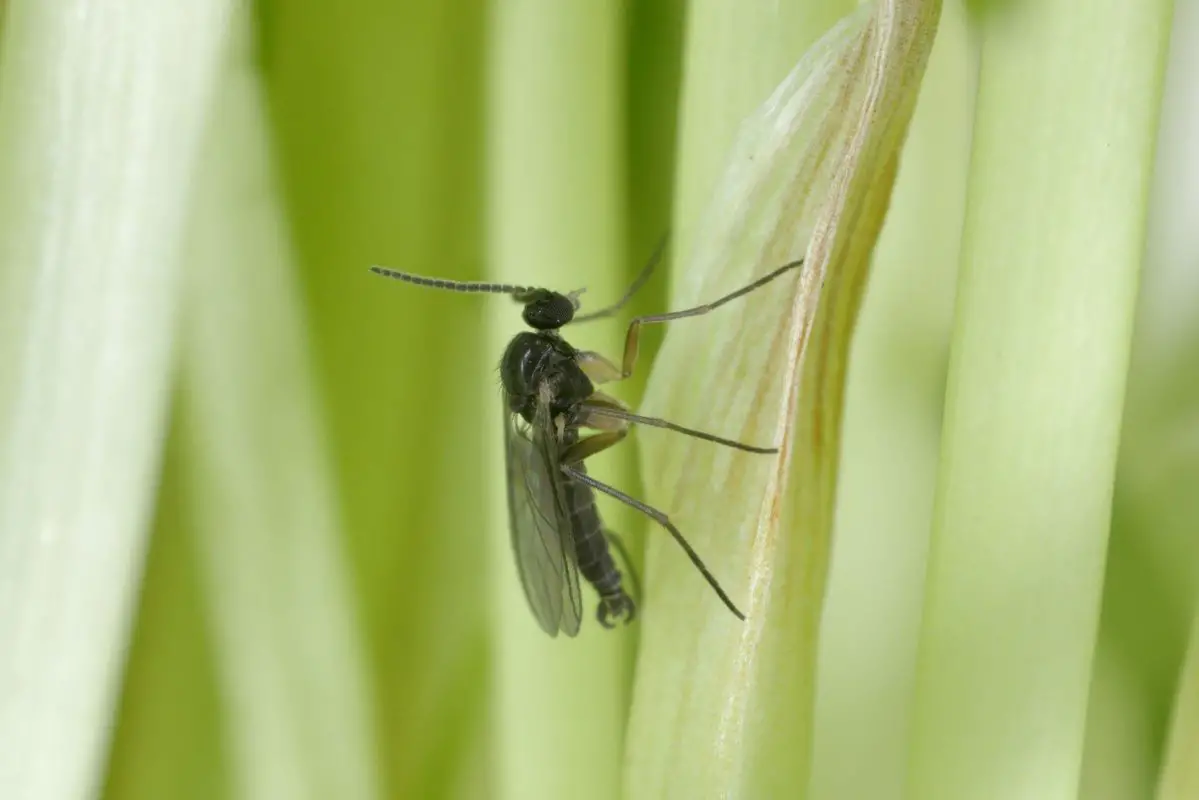
Indoor plants have fewer problems than outdoor plants, making them famous with several homeowners due to their ease of maintenance. However, they are prone to some issues, and one common concern is really whether houseplants attract bugs.
Do Indoor Plants Attract Bugs? (Treatment And Prevention)
Indoor plants, indeed, attract bugs. They are typically drawn to indoor growing conditions like high moisture or absence of air circulation. Mealybugs, Aphids, fungus gnats, spider mites, scale, whitefly and thrips are the most common pests.
Having quality growing conditions, properly watering, and inspecting your plants on a regular basis will help keep infestations at bay and enable you to treat them fast, reducing plant damage.
However, all is not lost. There are some things you could do to help prevent these unwanted bugs from entering your home and potentially harming your lovely plants. Continue reading to learn more about what you can do to combat these vexing pests.
Conditions That Attract Indoor Plant Pests
High Humidity Attracts Bugs to Indoor Plants
Numerous bugs have a keen sense that draws them to areas with high humidity. Because of their small body size, they must keep their bodies moist or else they will dry out and die, making them to seek out areas with higher moisture levels.
Inadequate Air Movement
Consider what strong winds can cause to a small creatures such as a bug. Those insects that can fly may have to stay on the ground because the harsh air will disrupt their flight route and send them swerving in places they don’t want to go.
The insect then seeks a calm environment, such as your home or indoor garden. They feel safe settling in and making themselves at home because the air does not gust here.
A absence of air circulation can be caused by a variety of reasons, including:
Air Movement: Several areas of your home may be far from windows, doors, vents, or the delicate air flow created by ceiling fans or movements of people by. If necessary, relocate your plants to a better-ventilated area, leave a window open, or consider using an oscillating fan.
No Space: The most common cause of poor air circulation through the foliage is planting plants too close together. Although grouping your plants can help to increase humidity where it is needed, try not to let them touch as this will reduce ventilation around the foliage.
Still Water
Standing water is any pool of water that remains after you water your houseplants. This can be water on the leaves, water on the soil’s surface, or even water in a container if your indoor plant grows best when submerged.
Many insect species enjoy stagnant water, and not just water bugs. It’s because bugs require moisture to keep their bodies from drying out, which can result in death. In some cases, such as when growing a plant in water, having some stagnant water is unavoidable. Because bugs will enter your home or office, you’ll need to be more watchful in keeping them out.
What Kinds of Bugs Do Indoor Plants Attract?
Aphids

Aphids are tiny sap-sucking insects which love to attach themselves to your indoor plants and cause significant damage over time. They produce honeydew, a sticky liquid found on the leaves and stems. This pest cause distorted leaves and yellowing foliage in houseplants, which most often leads to leaves drop.
One of the most difficult challenges with these tiny pests is that they reproduce rapidly and can become abundant.
Mealybugs

The mealybug is another insect that enjoys your houseplants or indoor garden. Because it lacks armor, this bug prefers warm, moist environments.
Whenever the female mealybug finds a plant she likes in your indoor garden, she attaches herself to the roots or any crevice she can find. She’ll drink the sap from your poor houseplant, leaving a powdery layer of wax behind. Mealybug eggs are usually found in this powdery layer of wax.
If you grow anything sweet in your indoor garden, such as sunflowers, orchids, cacti, gardenia, ferns, coffee trees, or citrus trees, you must take extra precautions to avoid mealybug infestation.
Spider Mites

Because of their small size, spider mites can be difficult to detect. Look for fine webbing between your plants’ foliage and on both sides of the leaves for evidence of these tiny little bugs, which are usually less than 1mm wide and come in a variety of colors.
When a spider mite decides to make your houseplant its home, it settles beneath the plant’s leaves. It creates webs, that are made of delicate silk material, there. The spider mite will also eat your plant, causing holes in the plant’s cells.
Fungus Gnats

Fungus gnats are problem, and while the damage they cause to plants is usually minor, the adults become an irritation when they enter your home’s living areas or socialize around windows.
Although the adults are more bothersome, the immature larvae that grow in the soil can harm your plants by feeding on the roots. Larvae feed primarily on decaying plant matter or fungi found naturally in soil. Immature gnats harm plants by introducing pathogens into the soil or inflicting wounds on the plant roots.
Fungus gnats can be identified as tiny, dark-colored flies circling around your indoor plants.
Read More: The Worst Time To Water Your Plants: An Expert’s Guide
Natural Ways to Get Rid of Unwanted Bugs in Your Indoor Plant
Getting Rid of Aphids
Start by removing any heavily infested plant parts. Wipe away insects with a wet cloth or spray them with water in the bathtub. You can also use a cotton swab dipped in rubbing alcohol or vegetable oil to remove them, or spray them with insecticidal soap. Continue to remove them on a weekly basis until they are gone. (Source: Platt Hill Nursery).
Getting Rid of Mealybugs
Dip a cotton swab in vegetable oil or diluted alcohol and remove the bugs and eggs from your plant, repeat process for 1 week.
Getting Rid of Spider Mites
It is critical to isolate the infected plant so that the mites do not spread. To remove the webbing and mites, spray the plant with water in your bathtub. Wipe any remaining bugs away with a cloth. Repeat the procedure every few days until the infestation is gone. If they persist, you could try an insecticidal soap.
Getting Rid of Fungus Snat
Allow the top two inches of soil to desiccate completely between waterings to dry out their habitat. After an hour or so, remove the water from the saucer and water your plant again. If you notice a resurgence, lightly spray the soil with insecticidal soap.
Frequently Asked Questions (FAQs)
How can I tell if my houseplants have bugs?
Changes in leaf color or texture can indicate an insect infestation. When insects are present, the leaves may become spotted, speckled, or yellowed. Leaves can also become distorted or misshapen, giving the appearance of being cupped or pinched. Webbing can be found draped along the undersides of leaves or where leaves attach to stems.
Does indoor plants attract mosquitoes?
You’ve had your fill of bugs, but how about the mosquito? You didn’t see it on the list, but you’re curious whether these bloodsuckers will enter your home or office via your indoor garden.
If you grow houseplants in excess moisture, there’s always a chance you’ll attract mosquitoes, though it’s not a very good chance. Otherwise, mosquitoes should not be drawn to your indoor garden.
Can I sprinkle vinegar on my indoor plants?
You might think a vinegar bath is a good idea if you’re trying to treat your indoor garden bug problem aggressively. Indeed, vinegar may kill some bugs, but it should not harm your pets, yourself, or your loved ones.
Conclusion
After reading this article, we can conclude that indoor plants do attract bugs. Infact, they plants I tested actually got bug infected. If you would like to learn more about this topic, please comment and share

